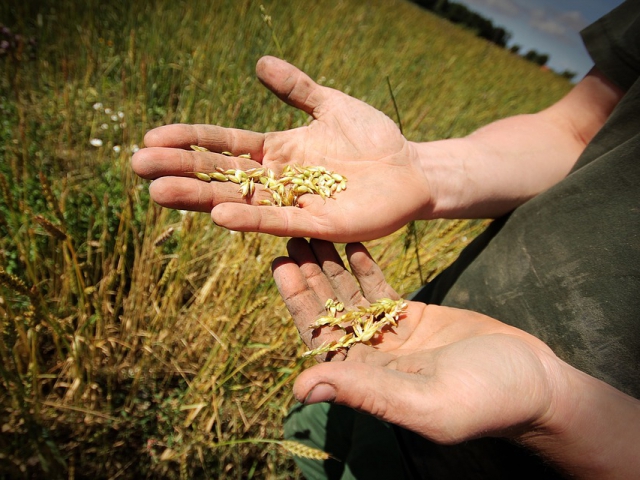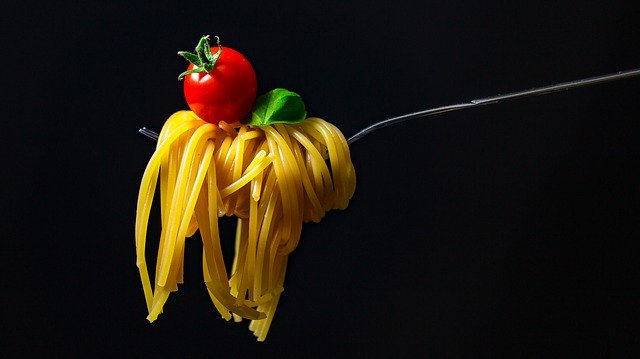
If you ever want to ruin your mood, just look at some of the statistics on how much food humans waste. Approximately a third of the world’s food supply is wasted every year, and when we have 690 million hungry people worldwide, that kind of waste has a devastating human cost.
All is not lost, though — at least, not if we teach our kids good habits when it comes to food usage. By modeling anti-food waste practices for kids, we can teach them to manage food responsibly and think about the ways that we all impact our environment. Here are seven good food conservation practices to teach kids from an early age.

Source: N. Savranska/Shutterstock.com
- Start an organic compost bin.
Making organic compost is an ideal way to put kitchen waste to good use, and it can be a fun family project to build and maintain one. It’s also fantastic for gardening, which makes it an excellent lead-in to something like a summer vegetable garden, where you can talk with kids about how we can reuse resources for a more sustainable lifestyle.
Remember to teach kids what goes in the compost. (Veggies, grains, coffee grounds, yes! Meat and bones, no!) Although with today’s advances in compostable plastic, you can even get things like a compostable phone case to feed your bin and reduce your plastic waste all at once.
- Turn food conservation into a game.
When it comes to plate cleaning and other issues of food waste, turning it into a game can be a great way to communicate the importance to kids. For the easiest solution, look at some of the board game-style food trays available online for toddlers that create a Candy Land-esque journey from their vegetables to their dessert.
But there are also plenty of eating games to play that you don’t need any special equipment for. Establish certain foods that give your kids superhero powers (like super strength for broccoli or X-ray vision for carrots) or have them pretend to be an animal that eats the food on their plate.
- Cook with the ugly fruits and vegetables.
Tons of fruits and vegetables get thrown away because they’re less than perfect-looking. Many grocery stores, farmers markets and subscription services now sell this “ugly” produce at discounted prices, which has several benefits. One obvious one is that it can provide you with great produce for less, which any parent trying to stretch a grocery budget will appreciate.
Second, it can also give you a valuable teachable moment with your kids about why you shouldn’t judge based on appearance. Once you get your kids used to ugly produce, they might even have fun looking at an oddly-shaped pepper or a slightly strange squash.
- Save food that kids don’t finish.
It’s always frustrating to toss a serving of food in the trash when your kid declares that they’re full. So why throw it away? If there’s enough for a decent serving left, pack it up into a food storage container and put it away for later.
This way, if your kid starts looking for an after-dinner snack an hour later, you’ve got a readymade option that will save you some exasperation. If worse comes to worse, you can put it in the compost later if it’s compostable. Or, use the food again to cook a new meal and show your kids how you turned leftovers into tasty food.

Source: Natal.is/Shutterstock.com
- Don’t let snack time be meal time.
Kids eating too many snacks before dinner is a sure path to a ruined appetite, which can result in food waste at the dinner table. Instead, work to limit kids’ snacking and concentrate on getting them to eat a full and healthy-sized portion when it’s time to eat.
Of course, there’s nothing wrong with healthy snacking, and kids should understand that, too. The point is to reduce the thoughtless use of food that can cause more food going to waste later. Children need to understand their own eating habits are part of a system that, even if any individual has only a small effect, eventually determines whether people around the world get enough to eat.
- Meal prep things that your picky eater likes.
When you finally hit on a healthy food that a picky kid enjoys, take advantage of hitting the jackpot and take time to meal prep some. If you use sensible portion sizes, it will help give kids a consistent experience of eating enough without wasting any.
This is an especially good idea if you find yourself struggling to put together lunches in the morning rush. Portion out some nutritionally balanced compromise meals — a bag of carrot sticks here, a fruit roll there — and you’ll make it easier to pack the right foods in the right portions every time.
- Model sustainability and the three Rs in your own lifestyle.
How many of us can say that we actually practice what we preach when it comes to reduce, reuse and recycle? When kids see adults letting vegetables rot or throwing out uneaten food, they can’t help but pick up the habits. That’s why parents have to model sustainability and responsible food use in our own lifestyles.
The good news is that today’s world gives you plenty of opportunities to live a lower-waste lifestyle, especially when it comes to the use of consumer products. These are just a few of the ways that you can model more sustainable consumer living:
- Get a compostable phone case for your smartphone
- Buy food from farmers markets, unpackaged or in recyclable packaging
- Use resealable containers to store food rather than plastic wrap
- Avoid single-use plastics like coffee pods whenever possible
- Seek out products packaged in compostable materials when you have to use disposable plastic

Source: Monkey Business Images/Shutterstock.com
The continued health of our food supply depends on teaching the next generation to use it respectfully. When more people work together to teach their children good food habits, fewer people will go hungry.



